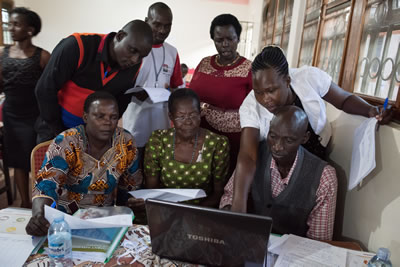Pomeroy-Stevens, Amanda, Alexis D’Agostino, Nancy Adero, Hannah Foehringer Merchant, Abel Muzoora, Ezekiel Mupere, Edgar Agaba, and Lidan Du. 2016. “Prioritizing and Funding the Uganda Nutrition Action Plan.” Food and Nutrition Bulletin 37 (4_suppl): S124–41. doi:10.1177/0379572116674554.
In 2010, Uganda began developing its first multisectoral nutrition plan, the Uganda Nutrition Action Plan (UNAP), to reduce malnutrition. While the UNAP signals high-level commitment to addressing nutrition, knowledge gaps remain about how to successfully implement such a plan. We tracked the UNAP’s influence on the process of priority setting and funding for nutrition from 2013 to 2015.

